One of the greatest swordsmen in Japanese history, Sasaki Kojirō famously lost his life during a 1612 duel with Miyamoto Musashi on Funajima Island.
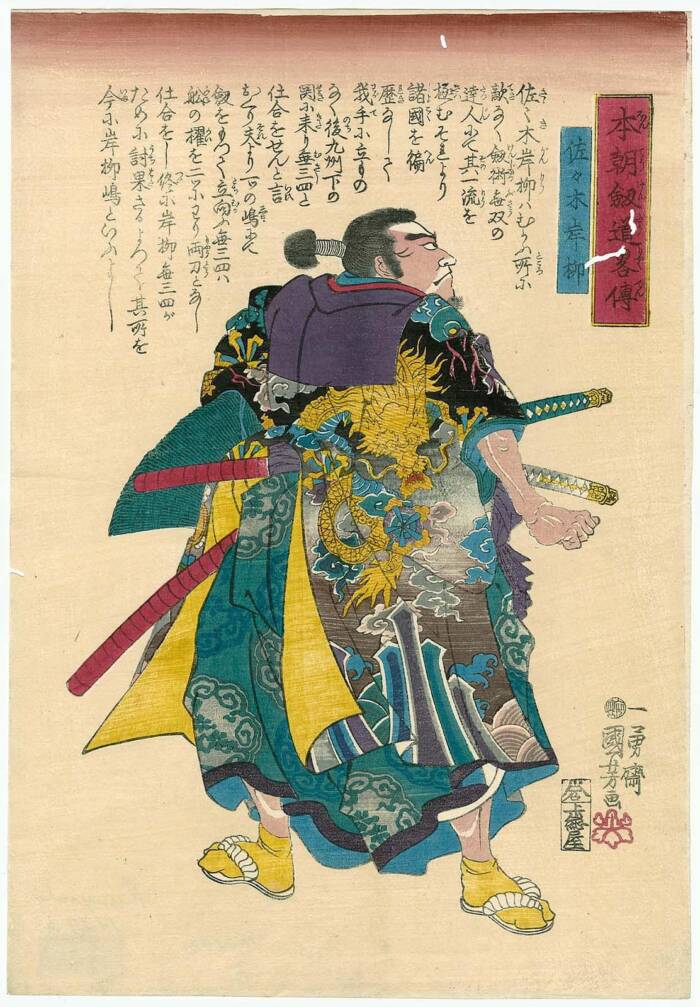
Public DomainSasaki Kojriō was a renowned swordsman during his life.
Japanese history is filled with epic tales of warriors, but few have stood the test of time as well as the story of samurai Miyamoto Musashi — and his duel with Sasaki Kojirō, one of Japan’s greatest swordsmen.
Although Musashi faced many powerful opponents in his time, none posed a greater challenge than Kojirō. The two faced off on the small island of Funajima in 1612, and though the battle was swift and decisive, it also proved to be one of the most important duels in the history of Japan. Musashi, around 28 at the time, struck Kojirō down quickly, cementing himself as Japan’s greatest samurai. Then, shockingly, he gave up being a warrior.
Although he was ultimately defeated in the duel, Sasaki Kojriō’s skill had been held in such high regard that Musashi felt there was no one left to prove himself to. He had emerged the victor against the country’s most skilled swordsman, and so he retired from dueling.
Ultimately, Sasaki Kojirō’s legacy is one of a commitment to honing one’s skill, and it continues to inspire martial artists to this day.
How Sasaki Kojirō Came To Be One Of Japan’s Most Skilled Swordsmen
Born around 1585 — the historical record is unclear — in Fukui Prefecture, much of Kojirō’s early life is shrouded in mystery. Accounts say that he studied the Chūjō-ryū style of swordsmanship, though it is debated whether his master was the renowned swordsman Toda Seigen or Kanemaki Jisai, who was himself a student of Seigen’s.
In either case, Kojirō became well versed in the Chūjō-ryū style from a young age, though his technique differed from his master’s in one notable way. While Seigen — presuming it was Seigen who taught Kojirō — was a master of the kodachi (short sword), Kojirō mastered the technique using a nodachi (long katana). This sword was 20 centimeters longer than a traditional katana, and Kojirō wielded it with such frightening ease that he became known as the “Demon of the Western Provinces.”
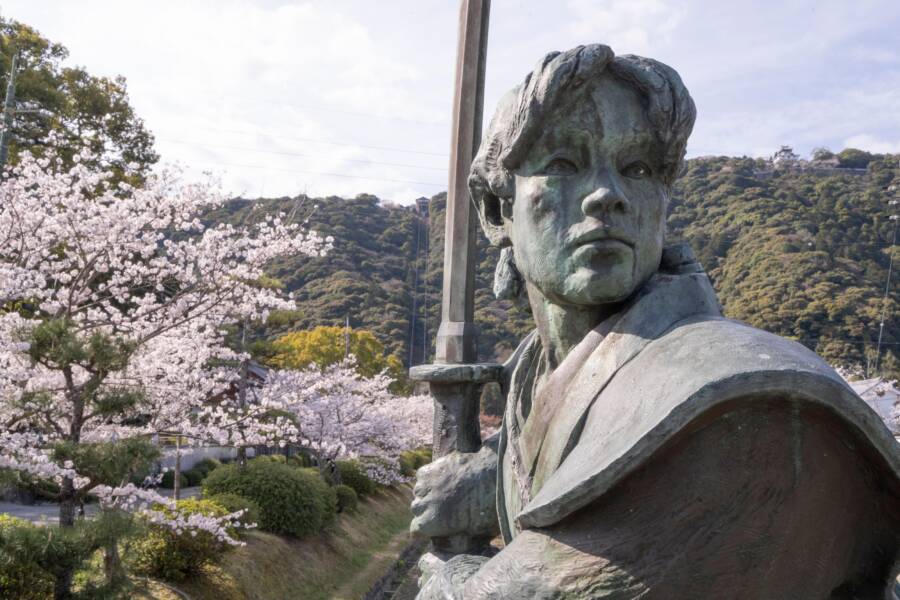
Chris Willson/Alamy Stock PhotoThe statue of Sasaki Kojirō on Ganryū-jima.
Eventually, Kojirō defeated his master’s younger brother in a duel and established his own school of swordsmanship. He called it Ganryū, or “Large Rock style.” He likewise became famous for his signature technique, which was called the Tsubame Gaeshi, or the “Turning Swallow Cut.” The name was inspired by the swift, unpredictable movements of a swallow in flight, as Kojirō’s movements were incredibly fast, frightening, and deadly.
Unfortunately, other than a name and general summation of the technique, there are no surviving records that describe how this technique was actually performed. (Indeed, many questions about Sasaki Kojirō remain.) What is certain, however, is that Kojirō’s technique and skill earned him equal parts renown and contempt across Japan as accounts of his duels struck fear into his opponents — and brought out rivals who would seek to challenge him.
The specific details of many of Kojirō’s earliest duels have been lost to time, but a few loose accounts have trickled through the ages. One early encounter that contributed to Kojirō’s fame was a showdown between him and three opponents. His foes had swords; Kojirō was armed only with a tessen (an iron fan). Despite this not being his weapon of choice, he was able to overpower his opponents and emerge victorious in the fight.
But it was the legendary duel between Sasaki Kojirō and Miyamoto Musashi that cemented both warriors’ places in history.
Who Was Miyamoto Musashi?
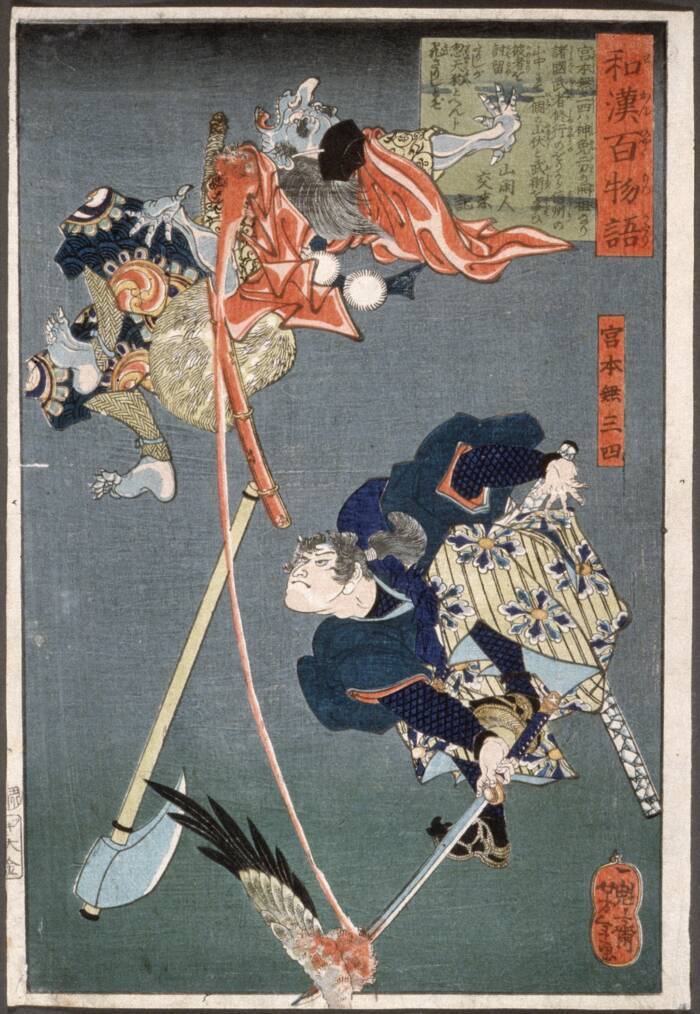
Wikimedia CommonsPrint of Miyamoto Musashi slicing a Tengu, one of the various yōkai from Japanese folklore.
Miyamoto Musashi was a renowned Japanese swordsman, strategist, philosopher, and artist. He is most famous for his unique double-bladed swordsmanship and an undefeated record in at least 60 duels. Many of his teachings were compiled in the 17th-century text The Book of Five Rings, which still serves as a guide for aspiring martial artists today.
Musashi fought and won his first duel at just 13 years of age, setting himself apart from his peers early on. In his later teenage years, Musashi fought on the losing side of the Battle of Sekigahara in 1600, which resulted in him becoming a rōnin, or masterless samurai. This period of wandering allowed Musashi to refine his skills and develop his distinctive nitō ichi-ryū, or “Two Heavens as One,” technique.
By 1612, both Musashi and Sasaki Kojirō were highly respected swordsmen — arguably, the two greatest warriors in Japan at the time. Naturally, this also made the two men bitter rivals. They decided to settle their rivalry once and for all on April 13, 1612.
The Fateful Duel Between Miyamoto Musashi And Sasaki Kojrō
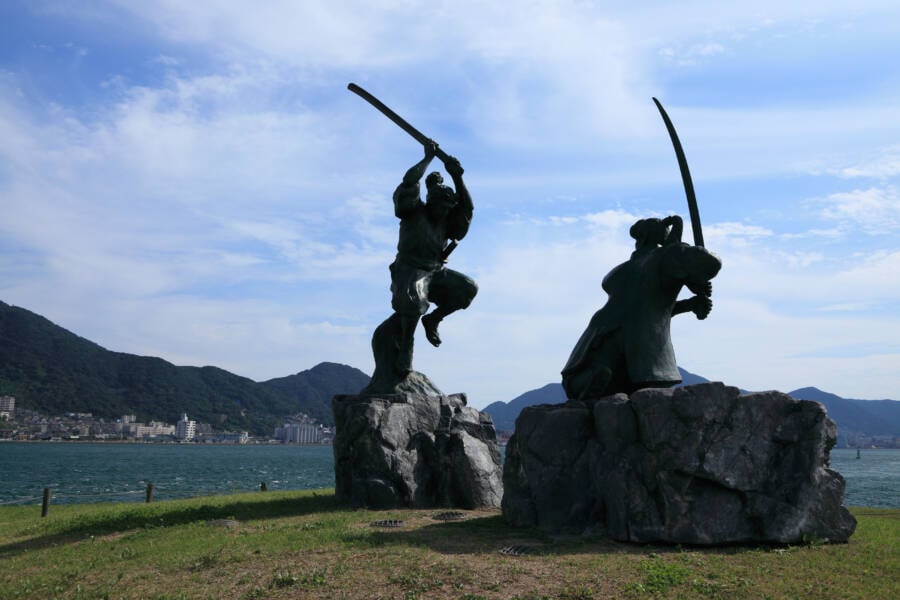
SOURCENEXT/Alamy Stock PhotoStatues of Musashi and Kojirō at Ganryū-jima Island.
Miyamoto Musashi met Sasaki Kojirō a small island, then called Funajima, but not at the planned time. Musashi, to disrupt his foe’s mental focus, arrived to the duel three hours late and with a strange weapon: a crude, hand-carved bokken, a wooden sword that he fashioned from an oar. It was notably longer than Kojirō’s famous nodachi as well, which gave Musashi an advantage in reach.
When Musashi finally arrived, an agitated Kojirō drew his sword and tossed aside its scabbard, shouting: “Are you late because you are afraid?”
Musashi, according to The Archaeologist, responded by saying: “If you have no more use for your sheath, you are already dead.”
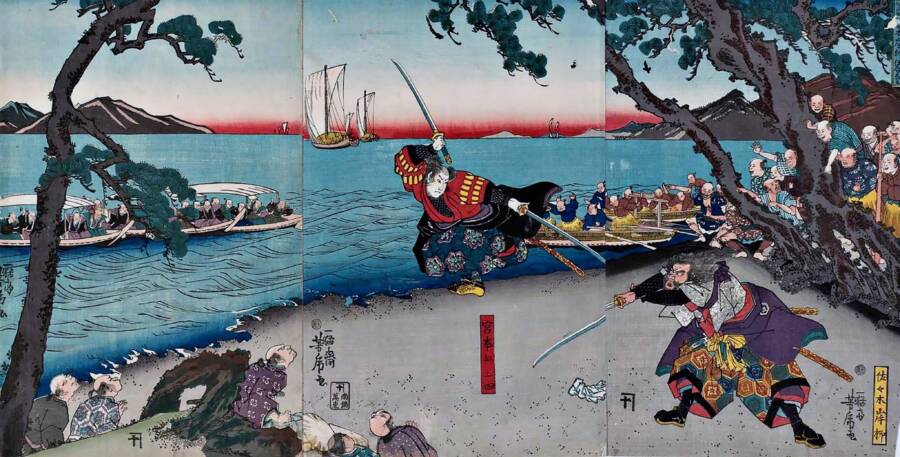
Public DomainA print depicting the fateful duel between Miyamoto Musashi and Sasaki Kojirō.
This only agitated Kojirō further, and he soon launched into an attack utilizing his renowned “Turning Swallow Cut.” Musashi, prepared for this and leveraging his longer bokken, swiftly countered, delivering a fatal strike to Kojirō’s skull. With that, the duel was over. Miyamoto Musashi had earned the title of Japan’s greatest duelist.
Believing he had no challenges left to overcome as a duelist, Musashi then retired and spent the remainder of his days as a teacher, artist, and philosopher.
Meanwhile, the island of Funajima was later renamed as Ganryū-jima in honor of Kojirō’s fighting style. Indeed, despite his decisive loss, Kojirō’s legacy remains strong. The duel between the two swordsmen has been immortalized in statues on Ganryū-jima, as well as in countless literature, theater performances, and films in Japan.
In the end, Sasaki Kojirō remains a well-regarded figure in the history of Japanese martial arts. His techniques contributed significantly to the discipline, and his story stands as a testament to the pursuit of excellence and the complexities of honor and rivalry in the samurai tradition. There is still some debate among historians as to whether the details of the fateful duel are entirely accurate — or if it even happened at all — but whether or not it happened, it stands as an example of skill, focus, and cunning.
After reading about Sasaki Kojirō, read about Oda Nobunaga, the samurai warrior who reunified Japan. Then, learn about seppuku, the ritual suicide practiced by samurai for decades.





